Biogas: Volumes 1 & 2
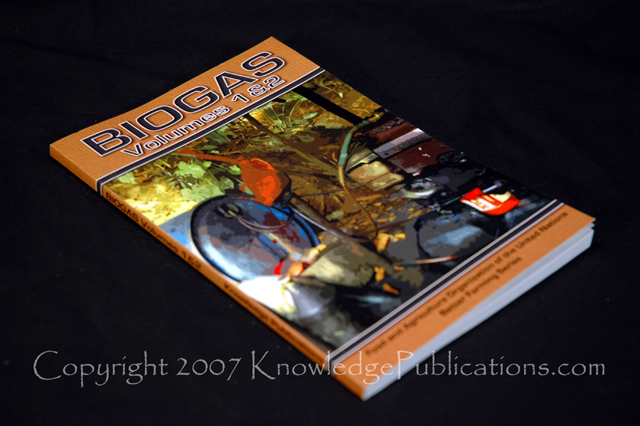
Biogas: Volumes 1 & 2 $24.95
Biogas: Volumes 1 & 2 combines two works that truly belong together. This book will enable you to genuinely understand how to really utilize Biogas in agricultural development at the farm and family level. Volume 1: Biogas, what it is; how it is made; how to use it begins with a thorough introduction to Biogas. This volume includes the information that you need to build a small Biogas unit including what materials you will need, where to put it and how to test for leaks. It goes on to describe which waste materials you should use and how to use them. It also explains how to protect your Biogas unit from weather extremes, maintenance needs of biogas units and much more. Volume 2: building a better Biogas unit follows after Volume 1 perfectly with great insights for those who have been through the first volume and have already built, tested and used a biogas unit or two. This volume is for those who have advanced their understanding of Biogas through valuable hands experience and are ready for the next level. Even if you have built several Biogas units, Volume 2 will give you essential tips that will definitely help you to build a better unit!

Volume 1:
Biogas 1: What It Is, How It Is Made, How To Use It.
Introduction
Biogas
How is biogas made?
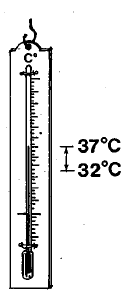 |
Biogas is produced best at a temperature between 32 and 37°C. You will need oil drums, pipe, valves, a gas line and sealing materials to build a biogas unit. |
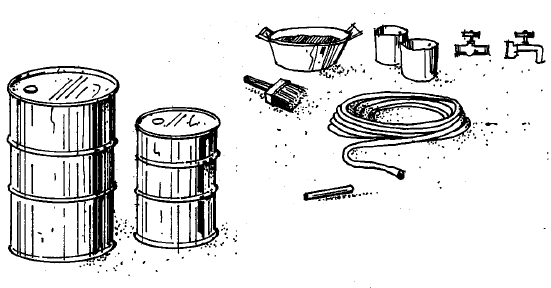 |
How big should your biogas unit be?
How to build a small biogas unit
You will need
Where to put your biogas unit
Building the unit
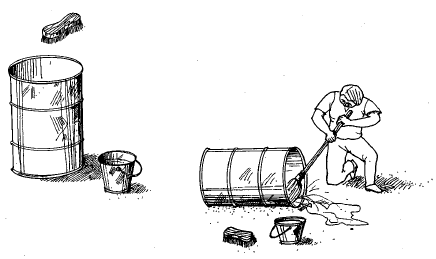 |
Now clean both drums well inside and outside to remove oil and grease. If either drum has a hole in the side, close it tightly. This can be done with a metal plug or by welding a piece of metal in the hole as shown in the drawings. |
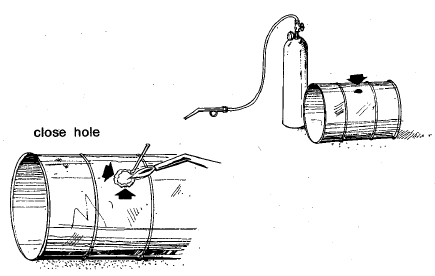 |
Testing for leaks
Waste materials
What waste materials to use
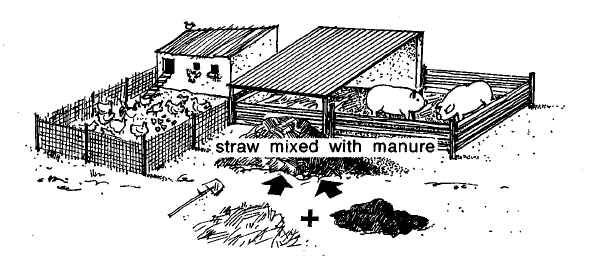
Straw which is mixed with manure, which you may have where you keep your pigs or chickens, is usually a good mixture of animal manure and plant material for making biogas. Be careful to chop it fine before you use it.
When you first begin, it is best to use only animal manure or a mixture of animal manure and very little plant material.
Later when you have learned more about how your biogas unit works, you can use more plant materials.
When you do begin to use plant materials, remember that dry plant materials must be chopped or shredded very fine and fresh plant materials must be left outside to rot for 10 days or more before you put them into a biogas unit.
How to use them
Making a starter
Putting waste into your biogas unit
You can tell that the waste mixture in your simple biogas unit has begun to rot and make gas when the small drum begins to rise. This means that gas is being collected. If you find that gas is leaking from the small drum after the biogas unit has begun to work, seal the leaks with tar, mastic or paint. If the gas is leaking around the gas outlet or valve, tighten the outlet or valve again and coat the joints with tar, mastic or paint. A good way to check for leaks after the biogas unit has begun to work is to put soapy water on the small drum and on the joints of all the parts and lines. If you see bubbles anywhere, you will know that there is a leak. |
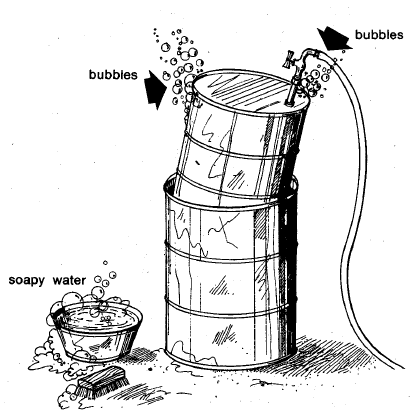 |
Time
Cold weather protection
Stirring the waste mixture
When the gas is made
Using your biogas
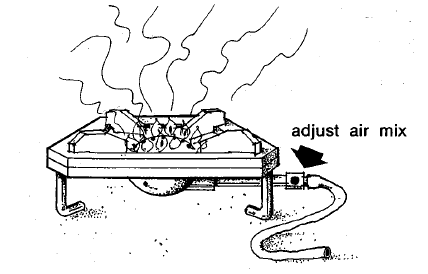
The best way to use the biogas that you make with your small biogas unit is for cooking. When your unit is working well, it will make enough gas every day to cook your evening meal.
You can use biogas with almost any ordinary gas-burner, if you adjust the burner so that the right amount of air is mixed with the biogas.
Using the fertilizer
Taking care of your biogas unit
Making more biogas
Volume 2:
Biogas 2: Building A Better Biogas Unit
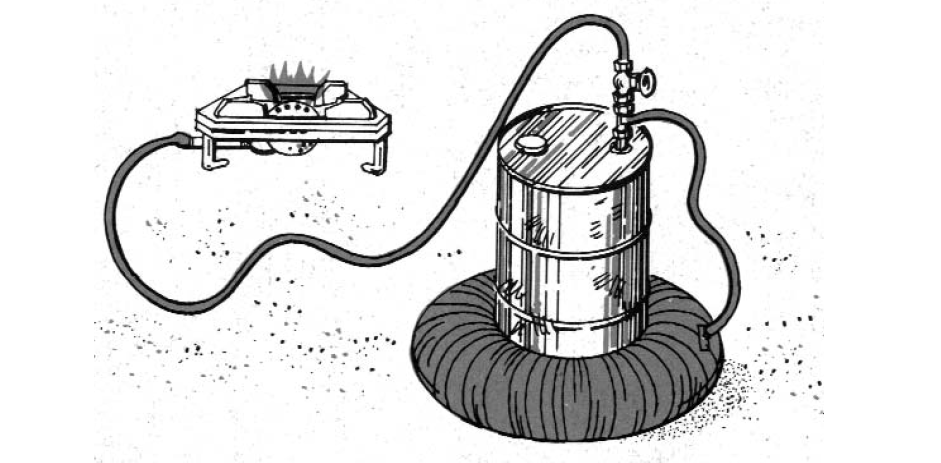
Introduction
How to build a better small unit
You will need
Cleaning the oil drum .. 8
Where to put your biogas unit .. 11
Preparing the oil drum
 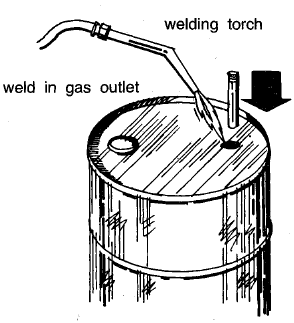 |
If there is only one threaded hole in the top of the oil drum, use it to put in the waste. Then you will have to cut a hole about 2 centimetres in diameter for the gas outlet. Weld in a pipe that is threaded on one end, as shown in the drawing at the top of this page.
|
Testing for leaks
Preparing the gas holder
Attaching the gas holder
Putting in the waste
The waste materials
The starter
Putting waste in this biogas unit
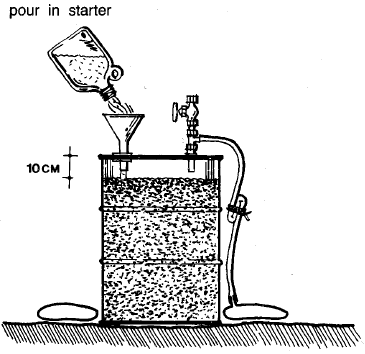 |
Again put three buckets of waste and three buckets of water in the large container and mix it as before. Pour this mixture into the drum. Then take out the funnel. Put a pole long enough to reach the bottom of the drum into the waste hole and stir all the mixture well. Continue in this way until the waste in the drum is about 10 centimetres from the top. Now put in about 4 litres of starter and stir it well. The starter, which has already begun to work, will help you to make gas sooner. |
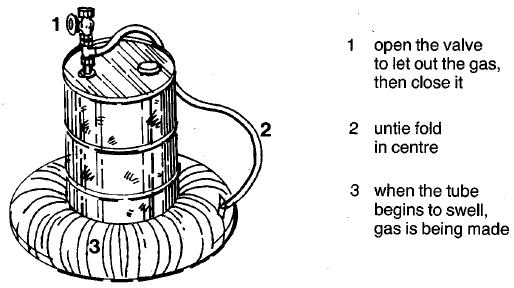 |
After the waste is in
Time
Temperature
Cold weather protection
Scum
When the gas is made
Taking care of your biogas unit
Making more biogas
What more can you do?
Another kind of biogas unit
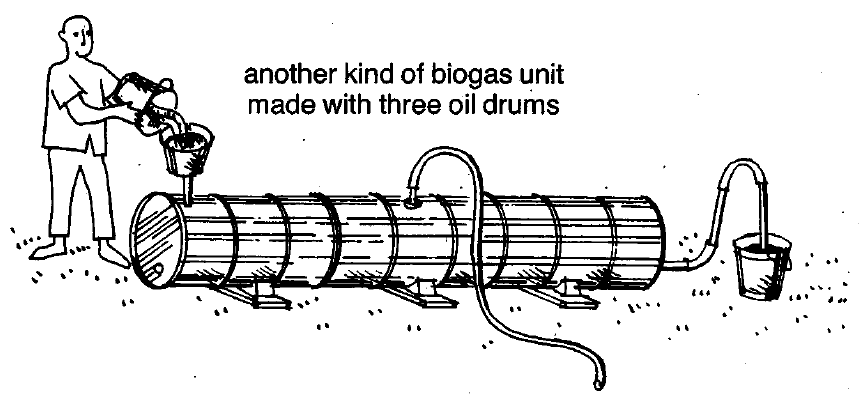
This kind of biogas unit can also be built using oil drums with the same kind of pipe fittings that you used before.
However, it can be built much bigger than your old units. You can use several oil drums instead of only one. So, you can make more gas than you did before

Biogas: Volumes 1 & 2 $24.95
Biogas: Volumes 1 & 2 combines two works that truly belong together. This book will enable you to genuinely understand how to really utilize Biogas in agricultural development at the farm and family level. Volume 1: Biogas, what it is; how it is made; how to use it begins with a thorough introduction to Biogas. This volume includes the information that you need to build a small Biogas unit including what materials you will need, where to put it and how to test for leaks. It goes on to describe which waste materials you should use and how to use them. It also explains how to protect your Biogas unit from weather extremes, maintenance needs of biogas units and much more. Volume 2: building a better Biogas unit follows after Volume 1 perfectly with great insights for those who have been through the first volume and have already built, tested and used a biogas unit or two. This volume is for those who have advanced their understanding of Biogas through valuable hands experience and are ready for the next level. Even if you have built several Biogas units, Volume 2 will give you essential tips that will definitely help you to build a better unit!

